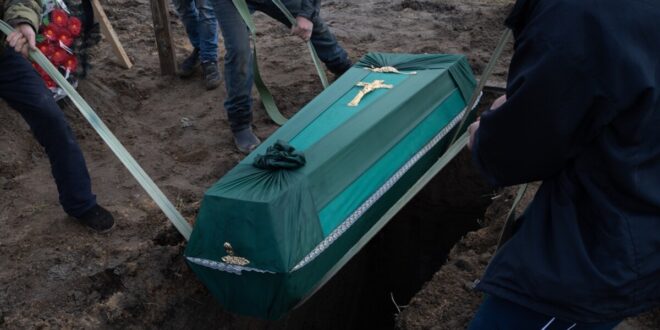Analysts agree that Russia’s losses in the war have been far higher—but the Ukrainian military is unable to replace its casualties at nearly the same rate.
Next week, the war in Ukraine will reach its third anniversary.
On February 24, 2022, Russia surprised the world by launching the large-scale invasion of its neighbor. The Russian military had been amassing forces along the border with Ukraine for months. However, many argued at the time that Russian President Vladimir Putin was bluffing and that he would recall his forces at the last minute.
Of course, Putin did not—and the largest conflict on European soil since the end of World War Two ensued.
After almost three years of brutal war, both combatants have taken heavy casualties in the fighting. According to all the available unclassified information, Russia has lost more than twice as many soldiers as Ukraine. However, given the two countries’ vast difference in size and population, Russia can deploy more men on the battlefield—and has a more robust strategic reserve than Ukraine.
The Casualties
An important consideration in any peace talks is the casualties both sides have sustained in almost three years of fighting.
According to the latest available data, the Russian military, paramilitary units, and pro-Russian separatist forces have suffered approximately 863,000 casualtieskilled and wounded. In addition, the Russian forces have lost tens of thousands of heavy weapon systems, including main battle tanks, armored personnel carriers, artillery pieces, infantry fighting vehicles, unmanned aerial systems, tactical vehicles, and aircraft. These data are based on daily estimates released by the Ukrainian Ministry of Defence, leading to suggestions of bias, but Western intelligence services and militaries have regularly corroborated the data.
Calculating the Ukrainian casualties is far more difficult. Ukraine mostly does not release information on casualty counts, and the West has largely refrained from sharing its own estimates for political reasons. While Russia regularly trumpets its estimates, the Kremlin’s counts of Ukrainian losses are known to be widely inaccurate—and designed primarily for domestic consumption and psychological warfare purposes.
Ukraine has occasionally released its estimates. In an interview, President Volodymyr Zelensky told reporters that the official Ukrainian casualty count was at approximately 400,000, with 46,000 killed and 380,000 wounded—though this is likely an underestimate.
The two sides’ force generation capabilities are of equal importance.
For example, Russia lost approximately 400,000 troops killed and wounded in 2024. However, the Russian military was also able to generate approximately 400,000 new recruits in the same timeframe, achieving a one-to-one ratio of casualties and reinforcements. As such, Russia’s high casualties have not been strategically devastating; commanders on the battlefield have not experienced any major manpower shortages that would affect their operations.
It is also important to note the influence of political will and societal approval. The Russian forces were able to replace almost every casualty they suffered during 2024—but the Kremlin also has the approval or political power to continue losing much larger numbers of men and weapon systems. In a democratic society, such losses might have forced a government to have honest negotiations for peace earlier.
If Ukraine has one problem, that is its poor force generation capabilities. Although the Ukrainian military is facing chronic munitions shortages, its inability to generate sufficient numbers of troops is a major reason why the Russian military is advancing slowly on multiple sectors of the contact line. President Zelensky has resisted repeated calls to reform Ukraine’s draft law, which requires men between the ages of 25 and 60 to serve but allows those younger than 25 to avoid enlistment. Ukrainian officials have defended this decision on a variety of grounds—ranging from the need to protect the country’s youth to the economic considerations of removing young people from the workforce. But as a result, the Ukrainian military continues to face a serious manpower crisis that is having an effect on the battlefield.
 Geostrategic Media Political Commentary, Analysis, Security, Defense
Geostrategic Media Political Commentary, Analysis, Security, Defense





